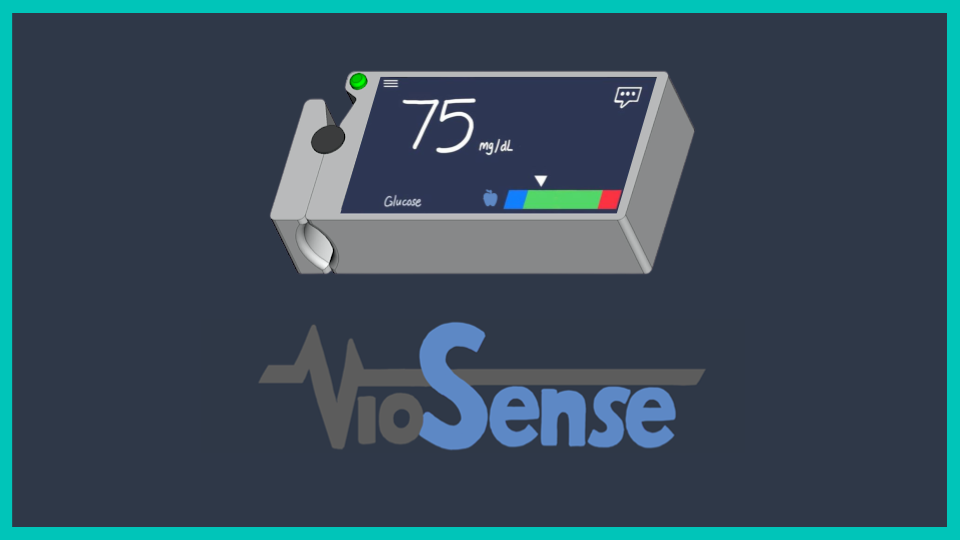VioSense: A Noninvasive Blood Glucometer
Team: VioSense
- Program: Chemical and Biomolecular Engineering
- Course:
Project Description:
Diabetes affects hundreds of millions of people and this number is expected to increase over time. There can be a lot of complications associated with Diabetes and there are many deaths that are a result of and linked to the condition. Diabetics need to regularly monitor their blood glucose levels to manage their condition. The most common tool for this is test strip technology, which requires patients to prick their finger each time. This can be burdensome for the patient since they need to take several measurements a day over the course of their lives.
Our device, VioSense can alleviate some of that burden by giving patients accurate and safe results without the prick of a finger. Our device makes use of photoplethysmography (PPG), the same technology used in pulse oximetry and pairs this with machine learning to predict a measurement of blood glucose concentration. With the use of two LEDs, we are able to obtain a biosignal from patients. From there we have an activity detector that ascertains if the device is picking up a proper signal. Afterwards, the data goes to a signal processing module that can pull relevant features from the shape of the curve, which will be sent to the machine learning module to get a prediction. The signal is obtained from a finger scanning piece, which contains the two LEDs connected to a base that features an LCD interactive display. In order for patients to understand their readings, VioSense’s BGguru offers results summaries over time and communicates with users about trends in their results.
The VioSense manufacturing process utilizes an electric injection molding machine and an automatic motor assembly machine. ABS plastic resin is injection molded into three steel molds that produce the pieces of our device enclosure. These pieces are combined with sets of electronic components at different stages of the assembly machine, including the PPG unit, circuit board, and screen placement assemblies. These machines are fully automated and can efficiently meet the demands of our production scale up. The final product is a VioSense glucometer equipped with our desired features: a hinged scanner that can comfortably fit the user’s finger, a capacitive touch interface overlaying a beautiful LCD screen, and bluetooth/WiFI capabilities for remote updates and data transfer. VioSense will require 5 years of development and regulation, as well as an investment of $5.7 million. Each year post startup, our manufacturing is scaled up, resulting in lower production costs and higher revenue. In less than 3 years after startup, we expect our net present value with the time value of money to turn positive and the company to break even.
VioSense uses photoplethysmography and machine learning to determine blood glucose measurements among other vitals, putting accurate health information into the hands of those who need it. By removing the need to constantly buy test strips and taking a thumb prick every time one needs a reading, VioSense removes the barriers for patients to get the treatment they need. Just 18% of people with diabetes report testing themselves the recommended frequency of at least 8 times a day while over 55% say they would if testing were painless and convenient. VioSense has the potential alongside other noninvasive glucometers to reshape how we view the burden of living with diabetes. Treatment should not be expensive, painful, or inconvenient. It is time that society shifts the focus away from excessive monetization to a patient-oriented model that actually works. We believe the continuous improvement of our product’s measurements and clinically desired features will blossom into an incredibly successful business.



